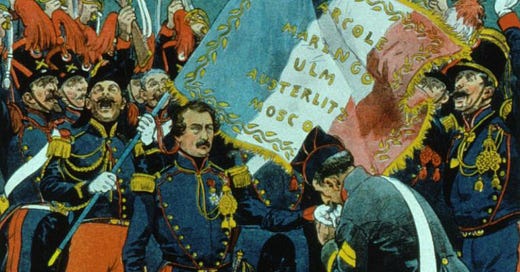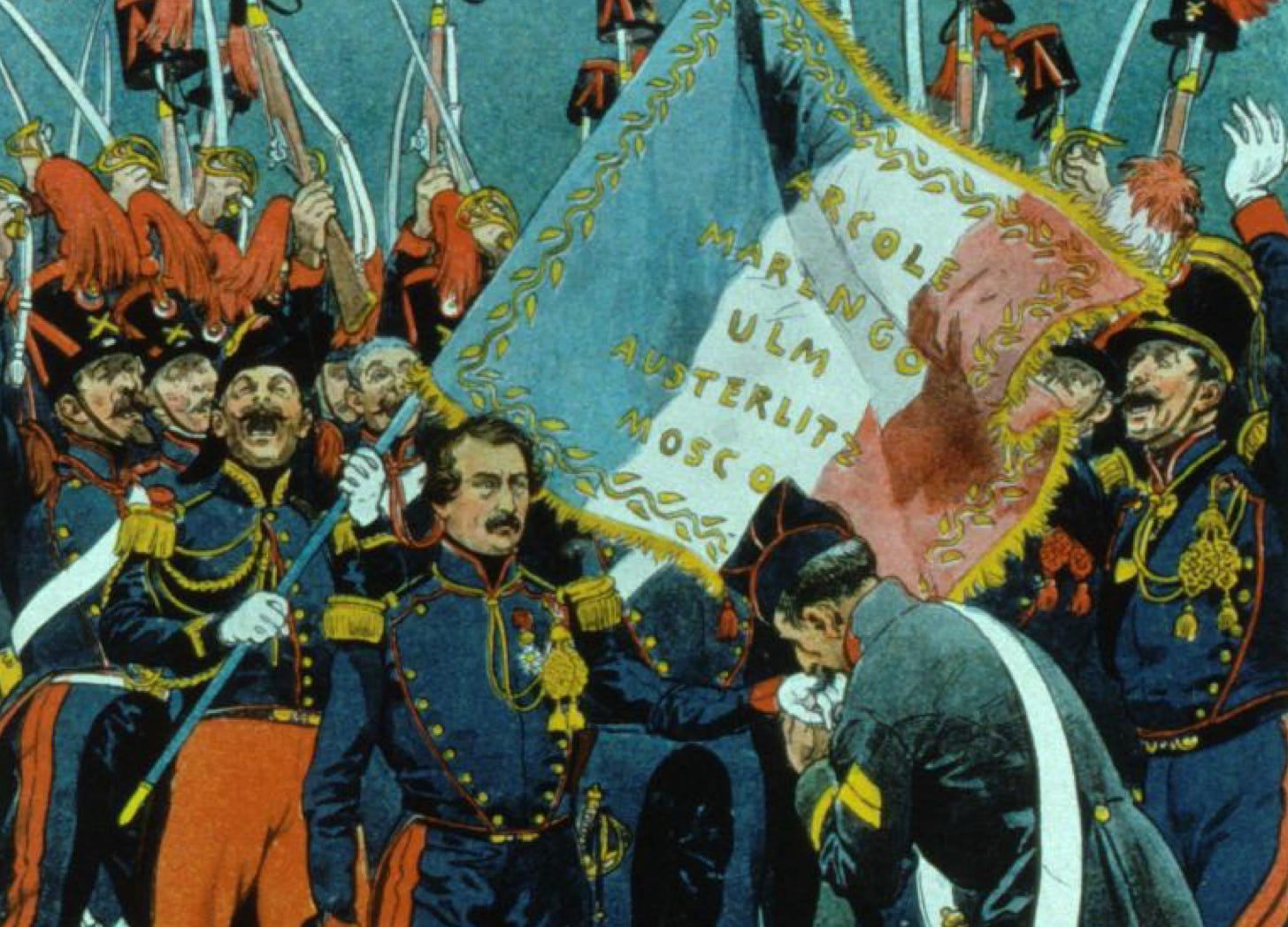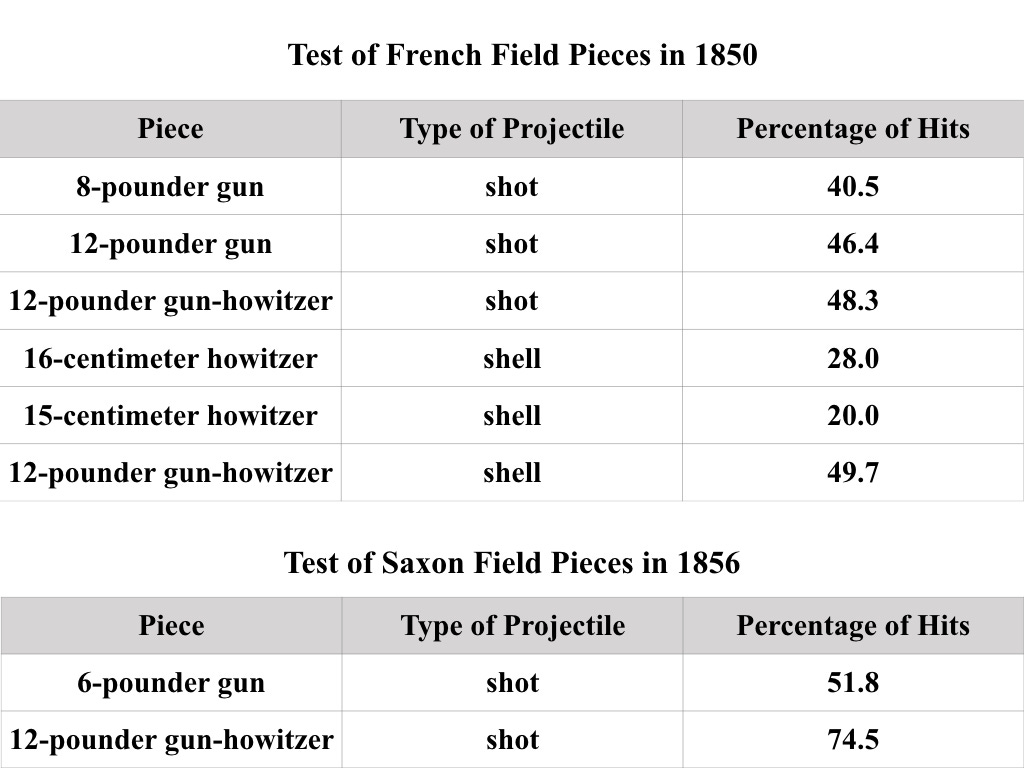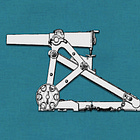In 1850, all artillery pieces in service with modern armies were smoothbore muzzleloaders made of bronze or cast iron.1 Pieces of radically different design, as well as pieces made of different materials, had been built and tested. None of these, however, had been adopted by any army, let alone fired in anger. Batteries of field, horse, and mountain artillery, which were sufficiently mobile to accompany an army on campaign, employed smoothbore muzzleloaders of two types. Guns, which had relatively long barrels, were tailored to the task of using relatively large propellant charges to fire solid metal cannonballs (“shot”) over relatively flat trajectories. Howitzers, which had shorter barrels, were optimized to use much smaller propellant charges to throw explosive projectiles (“shell”) along curved trajectories.
Companies of garrison artillery, which were primarily concerned with various types of fortress warfare, also made use of guns and howitzers. As a rule, these weapons were little more than scaled up copies of the ordnance served by field, horse, and mountain batteries. Garrison artillery companies also made use of mortars, which were designed to drop shells on top of targets. (To that end, mortars used very small propellant charges, and could thus make do with extraordinarily short barrels.)2
Shot and shell were the definitive projectiles of smoothbore muzzle-loading artillery, but far from the only things shot by the guns and howitzers of middle nineteenth century. For close defense against infantry or cavalry, most artillery pieces were provided with a few rounds of canister. Consisting of a sheet-metal cylinder filled with a number of lead or iron balls, canister was the only type of mass-produced artillery projectile of the smoothbore era that was not spherical in shape. For creating a similar effect at longer ranges, some gunners were issued shrapnel shells, hollow iron spheres that contained both musket balls and a small charge of gunpowder. When set off by a burning time fuze, the charge would burst the sphere, thereby releasing the musket balls, which formed a hail of small metal balls that traveled at the same velocity as the sphere that had carried them.
Though invented in the 1780s, shrapnel shells did not come into widespread use until the 1840s. By that decade, the makers of ordnance had developed techniques for increasing the chances that such projectiles would function as intended in flight. The shrapnel shells of the 1840s were also less likely than their ancestors to explode spontaneously while being transported over bumpy roads and less susceptible to disintegration while being loaded or fired.3
The era of radical change began, as revolutions often do, with a modest attempt to ameliorate the status quo. In particular, the somewhat conservative architects of this modest reform, the most famous of whom would soon become Napoleon III, Emperor of France, wanted to reduce the amount of powder used by muzzle-loading smoothbore guns.4 By doing this, they hoped to increase the size of the projectiles that guns of a given weight could fire, thereby allowing such weapons to make greater use of exploding projectiles.
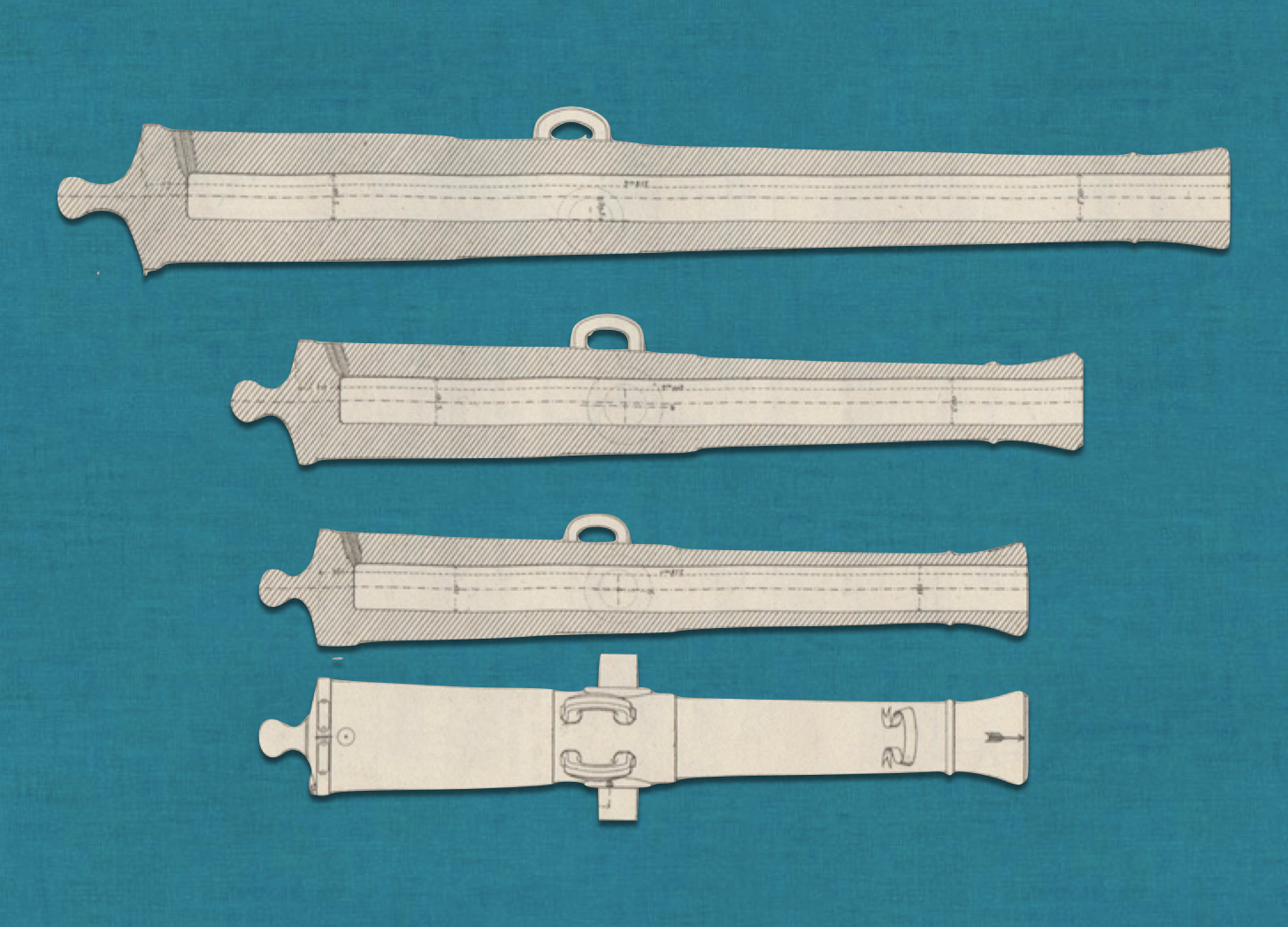
This modest reform, in turn, would permit guns to do much of the work that had previously been reserved for howitzers and, a result, make it possible for one type of artillery piece to do the work of two. Such dual-purpose pieces promised great benefits to artillerists who served with armies in the field. In particular, the replacement of both guns and howitzers with a “gun-howitzer” promised to simplify both the tactical employment of batteries (which would thus be able to use all their weapons at the same time) and the supply of ammunition.5
The gun-howitzer was not without its disadvantages. The shrinking of the propellant charge reduced both the velocity of projectiles and the distances that they were able to travel. For the time being, however, these drawbacks had little effect on the utility of the new weapon. The terminal effect of explosive shells was largely independent of their speed, the momentum of cannonballs remained sufficient to wreck havoc upon formed bodies of men, and the loss of range occurred at distances well beyond those at which the field batteries of the day were accustomed to find their targets. Notwithstanding the loss of velocity, gun-howitzers fired at vertical targets at ranges of nine hundred meters or less proved to be significantly more accurate than the field pieces that they replaced.
Experiments with the prototypes of the most famous of the gun-howitzers, the 12-pounder “Napoleon” adopted by the French Army in 1853, indicated that, when firing cannonballs at vertical targets at ranges between 500 and 900 meters, the new weapon did a slightly better job of hitting vertical targets than either a gun of similar weight (the 8-pounder field gun) or a gun of the same caliber (the 12-pounder field gun). When firing explosive shells against the same series of targets, the 12-pounder gun-howitzer proved more than twice as accurate as the two field howitzers then in service in the French Army.6 A similar test conducted by the Saxon Army proved even more favorable to the gun-howitzer. Not only did the Saxon gun-howitzer score a higher percentage of hits than its French counterpart, but did so against targets that were less than half the size of the ones used in the French experiments.7
In the land of its birth, the gun-howitzer proved to be a short-lived phenomenon. Adopted in 1853, the new “universal field piece” performed yeoman service in the Crimean War. At the battle of Alma, for example, twelve French gun-howitzers got the better of forty Russian field guns of older types, driving the latter off of the field and giving Marshal Leroy de Saint-Arnaud the opportunity to coin his famous play on words, “Sire, Your Majesty’s cannon has spoken.”
The problem that most concerned French artillerists in the late 1850s, however, was not the large numbers of old-fashioned guns and howitzers that filled the artillery parks of potential enemies, but the danger posed by rifled small arms. In particular, thoughtful French gunners, to include Napoleon III himself, foresaw an immediate future in which the shoulder arms carried by all infantrymen would be effective out to ranges of a thousand meters or so. In such a world, there would be many tactical situations in which riflemen would be able to inflict terrible losses on the horses and men of a field battery before the latter could fire its first round
Notes:
The Uprising at Strasbourg depicts a young Louis Napoléon Bonaparte, in the uniform of an artillery officer, at the start of the failed coup d’état of 1836. This beau geste inaugurated a series of misadventures which eventually resulted in his imprisonment of in the fortress of Ham, which provided him with the leisure to design the 12-pounder gun-howitzer that would bear his name.
The image of the canon-obusier de 12 is based a lithograph found in a textbook for young artillery officers: Ecole militaire de l'artillerie (Cours d'artillerie), Historique de l'artillerie de l'origine à 1914 (Poitiers: Lithographie de l'école militaire de l'artillerie, 1922), page 41
The image that compares the 12-pounder gun howitzer with a 12-pounder siege gun and a 12-pounder fortress gun owes much to a lithograph included with a pocket reference for artillery officers: Aide-mémoire à l'usage des officiers d'artillerie, Chapitre I: Bouches à feu (Paris: J. Dumaine, 1880), plate V
The tale of the 12-pounder gun-howitzer continues with …
For a discussion of experiments with rifled artillery in the two centuries before 1850, see Toll, "Gezogene Kanonen älterer Zeit", Archiv für die Offiziere der Königlich Preußischer Artillerie- und Ingenieur- Corps, Volume 49 (first half of 1861), pages 1-8.
The most accessible contemporary overview of state of the art of cannon artillery in the middle decade of the nineteenth century is Alfred Mordecai, Military Commission to Europe in 1855 and 1856, (Washington, DC: George W. Bowman, 1861). For descriptions of the field artillery establishments of particular armies in the years between the end of the Napoleonic Wars and the middle of the nineteenth century, see, among others, Henry W.L. Hime, History of the Royal Regiment of Artillery, 1815-1853, (London: Longmans, Green, and Company, 1908) and the ten-volume series of national studies carried out by Georg Albano von Jacobi, Beschreibung des gegenwärtigen Zustandes der Europäischen Feld-Artillerien, (Mainz: F. Kupferberg, 1835-1843).
For a short description of the early days of the shrapnel shell, see Bruce I. Gudmundsson, “Shrapnel’s Lethal Shells”, MHQ: the Quarterly Journal of Military History, Spring 2009, p. 76. For a more detailed treatment, see Arthur Marshall, “The Invention and Development of the Shrapnel Shell”, which was simultaneously published in the Journal of the Royal Artillery, (January 1920, pages 458-463) and the Field Artillery Journal (January-February 1920, pages 12-18.)
With the aid of his capable collaborator, Ildefonse Favé, the future emperor laid out his argument for the gun-howitzer in a short book: Nouveau Système d’Artillerie de Campagne, (Paris: Dumaine, 1851). This work was later incorporated into the multi-volume history of artillery begun by Bonaparte and completed by Favé: Études sur le Passé et l’Avenir d’Artillerie, (Paris: Dumaine, 1846-1871).
In the first half of the nineteenth century, many field batteries were of the mixed variety, with four, five, or six guns of a single size and one or two howitzers of a substantially larger caliber. See, among others, Charles Henry Owen and Thomas Longworth Dames, Elementary Lectures on Artillery, (Woolwich: Royal Artillery Institution, 1861), pages 184-185; A. Taubert, Gefechtslehre der Feld-Artillerie, (Berlin: Decker, 1855), pages 17-18; and Henry Jervis White Jervis, Manual of Field Operations, (London: John Murray, 1852), pages 129-134.
Favé, Études sur le Passé et l’Avenir d’Artillerie, Vol. 5, pages 225-228 and Bonaparte and Favé, Nouveau Système d’Artillerie de Campagne, pages 49-60. The targets used in the French test were pieces of cloth that were 30 meters wide and 3 meters high.
Woldemar Streubel, Die 12-Pfündige Granatkanone und ihr Verhältnis zur Taktik der Neuzeit, (Kaiserslautern: Hugo Meuth, 1857), pages 171-172. The targets used in the Saxon test were pieces of cloth some 14 meters wide and 2.8 meters high.


